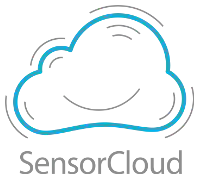
A second aspect of SensorCloud was the availability of sensed data. Today’s applications of sensor networks mostly implement isolated networks. It is oftentimes neither possible to reuse information for different application scenarios nor to combine information from different networks in order to gain higher-value information. In stark contrast to such restricted data availability, the central and highly scalable platform of SensorCloud makes information accessible across application and network boundaries. Hence, SensorCloud allows to reuse sensed information for different kinds of applications and to correlate sensor data independent from the sensor location.
Sensed data may contain highly personal or otherwise critical information (especially in company settings). Hence, users currently refrain from storing critical information in cloud platforms such as Amazon EC2. When interconnecting smart objects with the cloud we observe that these scenarios typically involve a gateway in the trusted domain of the sensor data provider. While these gateways commonly provide connectivity with the Internet, we elevate them to trust points of the SensorCloud architecture. Specifically, trust points encrypt sensed data before storing it in the cloud and perform access control for the stored data. This ensures that the data provider remains in control over her data. Besides the actual design of the trust point-based architecture, SensorCloud research topics include efficient multi-party encryption and integrity protection, federated user management, and mechanisms to convey privacy implications to users and cloud providers.
SensorCloud, funded by the Germand Federal Ministry for Economic Affairs and Energy (BMWi) as part of the Trusted Cloud initiative, was a joined project with several partners from academia and industry that ran from 2012 to 2014. It was a research effort that aimed to provide synergies for two recent trends in networking: the Internet of Things and Cloud Computing. More information on this past project and our project partners can be found on www.sensorcloud.de.